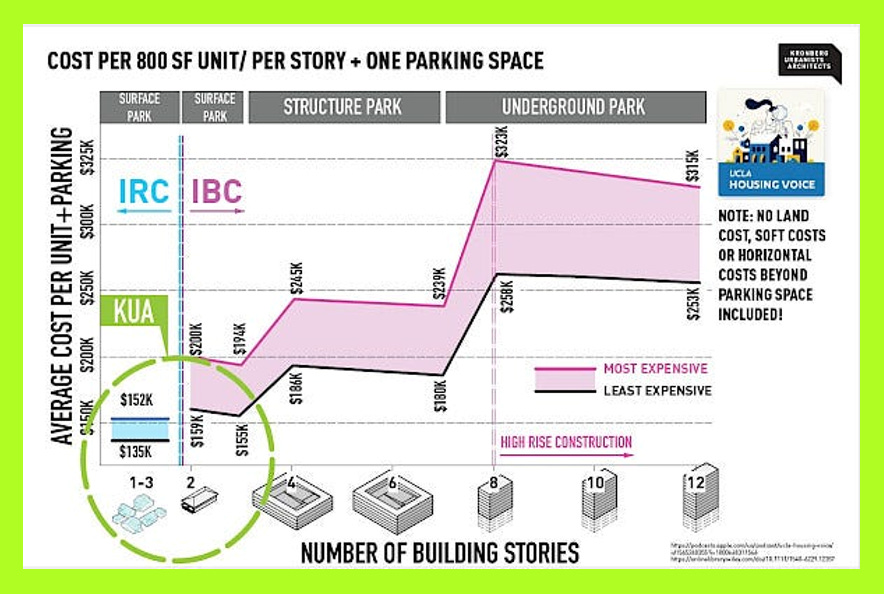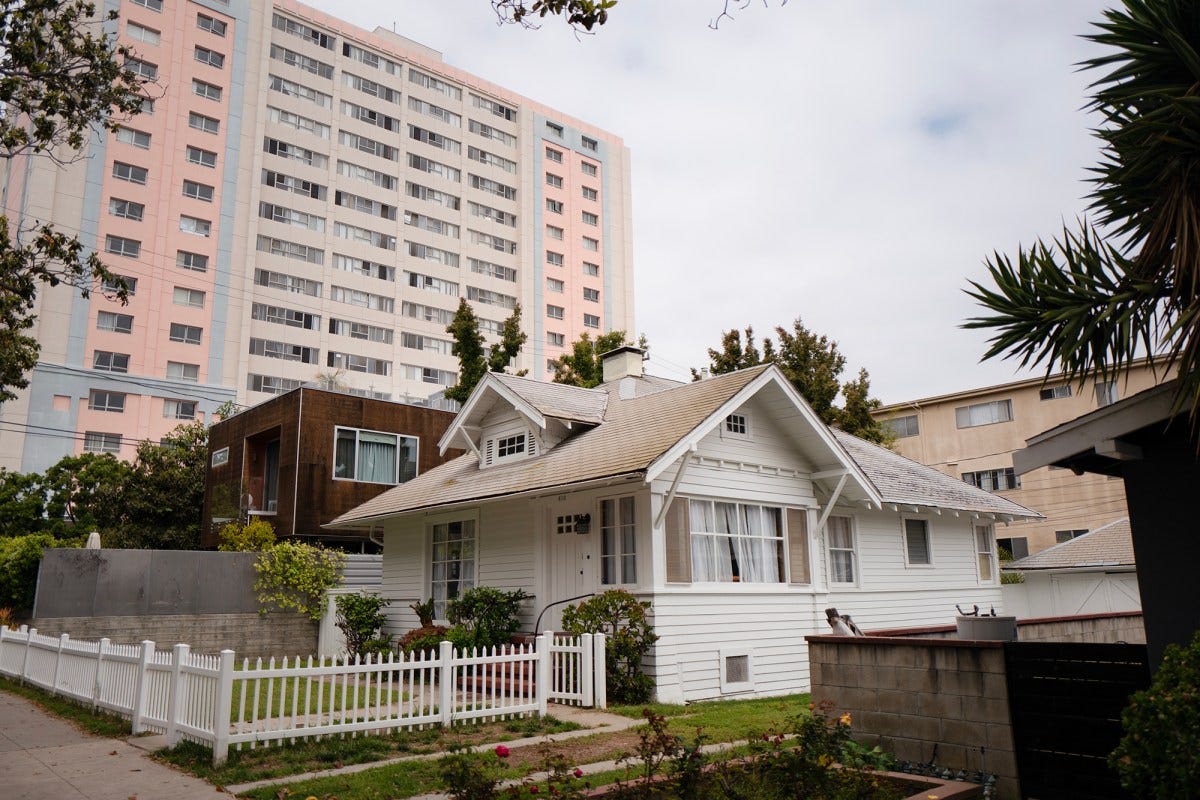Affordability Doesn't Come from Where You Think
Housing advocates have to do better at understanding cost thresholds
This past week, I had the opportunity to catch up with my buddy, architect Eric Kronberg, at the National Town Builders Association conference in Florida. Eric is the founder and lead architect at Kronberg Urbanists + Architects, where he and his team make sharp graphics in pursuit of a single goal: affordability. He does this effectively because few have more experience navigating the effects zoning and building codes have on affordability than his firm.
What most people don’t realize is that affordability now splits into two very different camps. On one side is demand-side affordability, which is politicized, subsidized, expensive, and often operates with little regard for cost. On the other side is supply-side affordability, which is market-based, unsubsidized, and inexpensive, led by developers obsessed with reducing costs.
Ninety-five percent of what we read and hear about affordable housing focuses on the demand side. Supply-side operates mostly behind the scenes. I suspect this is because politicians can’t easily take credit for it (since they don’t control it), and journalists don’t praise builders because doing so would violate pre-ordained narratives.
WHICH IS MORE AFFORDABLE?
I witnessed this cognitive disconnect firsthand in Detroit at the Congress for the New Urbanism in 2016. A speaker asked a room of about 50 people — 40 planners, students, and academics, opposite maybe 10 builders and developers, “Which housing type delivers the lowest cost per unit: single-family homes or tall multifamily?”
Almost without fail, the planners and academics raised their hands for tall multifamily buildings. When asked, “Who thinks small single-family homes delivered the lowest cost per unit?” the builders and developers all raised their hands.
The builders were right. And they were also the ones who wrote the checks, so they knew the numbers in a way the planners didn’t.
UNDERSTANDING THE THRESHOLDS
That disconnect stems from building code thresholds, and nowhere is this more evident than in Kronberg’s diagram. The cost per unit doesn’t decline in a straight line as density increases. Instead, costs spike each time you cross a threshold.
Jumping from the International Residential Code (IRC) to the International Building Code (IBC), which happens at just three units, can raise costs by $50,000 to $90,000 per unit.
Once you go over three stories, you need an elevator and two stairs, which drives costs up again.
At seven stories, the whole building must be made of steel or concrete, and the numbers climb once more.
Each threshold works the same way. Costs peak at the entry point, then gradually decline as economies of scale take effect, until the next threshold triggers another spike. Affordability is lost not in vague policy debates but in these concrete, code-driven jumps.
In places like Durham and Atlanta, builders are delivering new units for $150,000 to $200,000 under the residential code. By contrast, institutionally financed demand-side developments — the ones that politicians and journalists love to celebrate — are routinely coming in at $400,000 a unit or more.
The lesson from this is simple. If affordability is the goal, small and simple units are the path. Supply-siders understand this. Most everyone else does not.





Great article Aaron and thanks for providing the supply-side point of view. In your experience does the small-scaled, missing middle type of development pass affordability to the end-user? Do we really see a difference in housing costs for residents? With the way housing costs are rising it seems to me that single family housing are just as if not more expensive than multi family housing units.